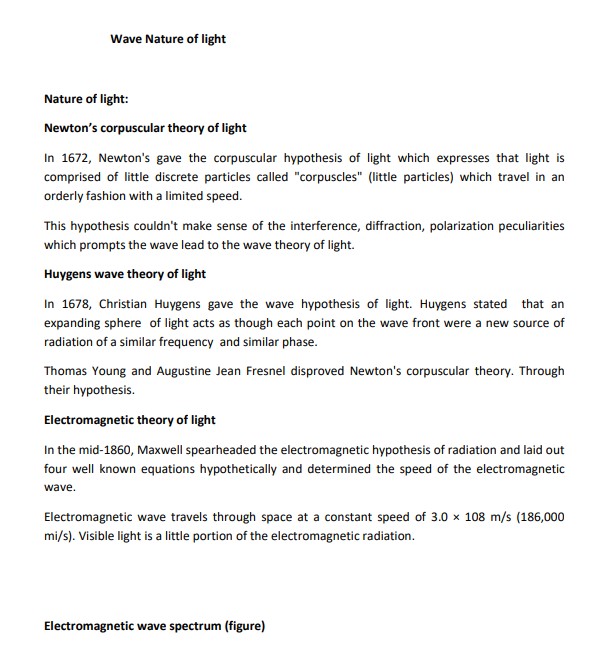Wave Nature of Light
Summary:
The nature of light has been theorized in various ways. Newton’s corpuscular theory proposed in 1672 suggests light is made of “corpuscles”, small discrete particles. However, this theory failed to account for interference, diffraction, and polarization, leading to the development of the wave theory of light.
Christian Huygens, in 1678, posited the wave theory, indicating light behaves as waves radiating from a source, with each point on the wavefront acting as a new radiation source.
Maxwell, in the mid-1860s, established the electromagnetic theory, positing light as an electromagnetic wave travelling at 3.0 × 10^8 m/s. An electromagnetic wave is a combination of electric and magnetic fields vibrating perpendicularly as they travel through space.
Quantum theory introduces wave-particle duality, implying light is made of photons with both particle and wave properties. Photons are discrete energy packets quantified as E=hf, where h is Planck’s constant and f is the frequency of light radiation.
Coherent sources, necessary for light wave interference, have the same frequency, amplitude, and constant phase difference. Coherence is categorized as temporal, referring to wave field correlation at different times at one location, and spatial, the phase correlation between two points at a specific time.
Excerpt:
Wave Nature of Light
Nature of light:
Newton’s corpuscular theory of light
In 1672, Newton gave the corpuscular hypothesis of light, which expresses that light is comprised of little discrete particles called “corpuscles” (little particles), which travel in an orderly fashion with a limited speed. This hypothesis couldn’t make sense of the interference, diffraction, and polarization peculiarities that prompted the wave to lead to the wave theory of light.
Huygens wave theory of light
In 1678, Christian Huygens gave the wave hypothesis of light. Huygens stated that an expanding sphere of light acts as though each point on the wavefront were a new source of radiation of a similar frequency and similar phase. Thomas Young and Augustine Jean Fresnel disproved Newton’s corpuscular theory. Through
their hypothesis.


Reviews